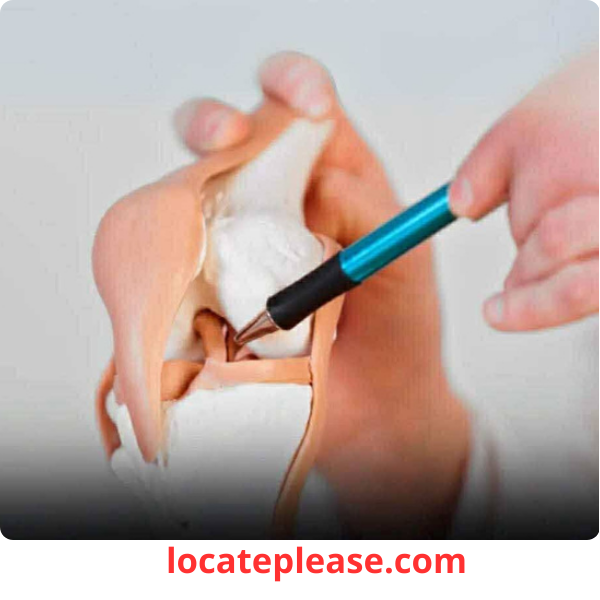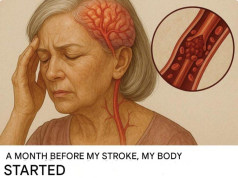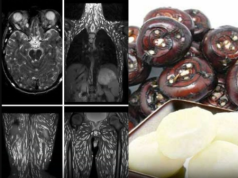Calcium isn’t just about strong bones — it’s essential for heart function, muscle contractions, nerve signaling, and blood clotting. In fact, the Cleveland Clinic reports that calcium is the most abundant mineral in the human body, with over 99% stored in your bones and teeth, giving them strength and structure.
The remaining 1% — though small in quantity — plays a vital role in daily bodily functions.
Since your body can’t produce calcium on its own, you must get it from your diet or supplements.
But here’s the catch:
👉 **Even if you eat calcium-rich foods, certain everyday foods can drain calcium from your body, silently weakening your bones over time.
The more you consume these foods, the harder it is for your body to maintain strong, resilient bones — increasing your risk of osteoporosis, fractures, and joint pain.
Let’s uncover the 6 hidden calcium thieves hiding in your pantry — and what to do instead.
❌ 1. Soda (Especially Colas) – The Stealthy Bone Buster
Why it’s dangerous:
Most colas contain phosphoric acid — a chemical that disrupts the calcium-phosphorus balance in your body.
When phosphorus levels rise too high:
- Your body pulls calcium from your bones to restore balance
- Calcium excretion in urine increases
- Bone density drops over time
Add to that the high sugar content, which promotes chronic inflammation — another enemy of bone health.
📊 The proof:
Studies show that women who drink cola daily have lower bone mineral density than those who don’t — even if they consume the same amount of calcium.
✅ Better choice:
Swap soda for:
- Herbal teas (like chamomile or rooibos)
- Sparkling water with lemon or lime
- Homemade fruit-infused water
❌ 2. Salt (Sodium) – The Silent Calcium Leacher
Why it’s dangerous:
Every gram of sodium you consume forces your kidneys to excrete 10–40 mg of calcium in your urine.
High-sodium diets = massive calcium loss over time.
And it’s not just the salt shaker — processed foods are the real culprits:
- Fast food
- Canned soups
- Frozen meals
- Chips and snacks
- Deli meats
Over time, this calcium drain weakens bones and increases the risk of osteoporosis.
✅ Better choice:
- Use herbs and spices (garlic, turmeric, rosemary) for flavor
- Choose low-sodium or no-salt-added versions of packaged foods
- Cook more at home to control sodium levels
❌ 3. Excess Caffeine (Coffee, Tea, Energy Drinks)
Why it’s dangerous:
While moderate caffeine is generally safe, excessive intake (more than 400 mg per day — about 4 cups of coffee) can interfere with calcium absorption.
Caffeine:
- Increases calcium excretion in urine
- Slightly reduces calcium absorption in the gut
- Can displace calcium-rich drinks like milk or fortified plant milks
Over time, this adds up — especially in people with low calcium intake.
✅ Better choice:
- Limit coffee to 1–2 cups per day
- Add a splash of fortified almond, soy, or dairy milk
- Balance caffeine with calcium-rich foods (like yogurt or leafy greens)
❌ 4. Alcohol – The Bone-Building Blocker
Why it’s dangerous:
Heavy drinking (more than 2 drinks per day) harms bones in multiple ways:
- Suppresses osteoblasts — the cells that build new bone
- Reduces vitamin D levels, impairing calcium absorption
- Increases cortisol, which breaks down bone
- Raises fall risk, increasing fracture chances
Even moderate drinking can interfere with bone remodeling — the natural process of bone repair and renewal.
✅ Better choice:
- Limit alcohol to 1 drink per day (women) or 2 (men)
- Choose bone-supportive drinks like bone broth or calcium-fortified smoothies
❌ 5. Red Meat & Processed Meats – The Acid Load Problem
Why it’s dangerous:
Diets high in animal protein (especially red and processed meats like bacon, sausages, and hot dogs) increase acid load in the body.
To neutralize this acid, your body leaches calcium from bones — a survival mechanism that backfires over time.
Processed meats are doubly harmful due to their high sodium and preservatives.
✅ Better choice:
- Replace some meat with plant-based proteins:
- Beans
- Lentils
- Tofu
- Nuts and seeds
- Choose lean proteins like fish, poultry, or eggs in moderation
❌ 6. Spinach & Rhubarb (High in Oxalates) – The Calcium Binder
Why it’s dangerous:
While spinach and rhubarb are nutritious, they contain oxalates (or oxalic acid) — compounds that bind to calcium and prevent its absorption.
So even though spinach has calcium, your body can’t use most of it — up to 80% is blocked by oxalates.
This doesn’t mean you should avoid these foods — but don’t rely on them as your primary calcium source.
✅ Better choice:
- Pair calcium-rich foods with low-oxalate greens:
- Kale
- Bok choy
- Collard greens
- Broccoli
- Steam spinach to reduce oxalate levels slightly
- Eat calcium-rich foods separately from high-oxalate meals
✅ How to Protect Your Bones: 5 Simple Tips
- Eat calcium-rich foods daily:
- Dairy (milk, yogurt, cheese)
- Fortified plant milks
- Sardines and salmon (with bones)
- Almonds, chia seeds, and tahini
- Get enough vitamin D:
- Sunlight (10–30 minutes daily)
- Fatty fish, egg yolks, fortified foods
- Supplements if deficient
- Stay active:
- Weight-bearing exercises (walking, dancing, lifting weights) strengthen bones
- Limit the calcium thieves:
- Cut back on soda, salt, alcohol, and processed meats
- Check labels:
- Look for “low sodium,” “no added sugar,” and “low oxalate” where possible
❤️ Final Thoughts: Strong Bones Start on Your Plate
Your bones aren’t just static structures — they’re living tissue that constantly rebuilds itself.
But they can’t do it without calcium — and protection from the foods that steal it.
By reducing or eliminating these 6 calcium-draining foods, you’re not just eating healthier —
👉 You’re building a stronger, more resilient skeleton for life.
So next time you reach for that soda, salty snack, or extra cup of coffee…
Pause.
Ask yourself:
Is this nourishing my body — or weakening it?
Because real strength doesn’t come from muscle alone.
It starts in your bones.
Eat smart. Live strong. Your bones will thank you.










